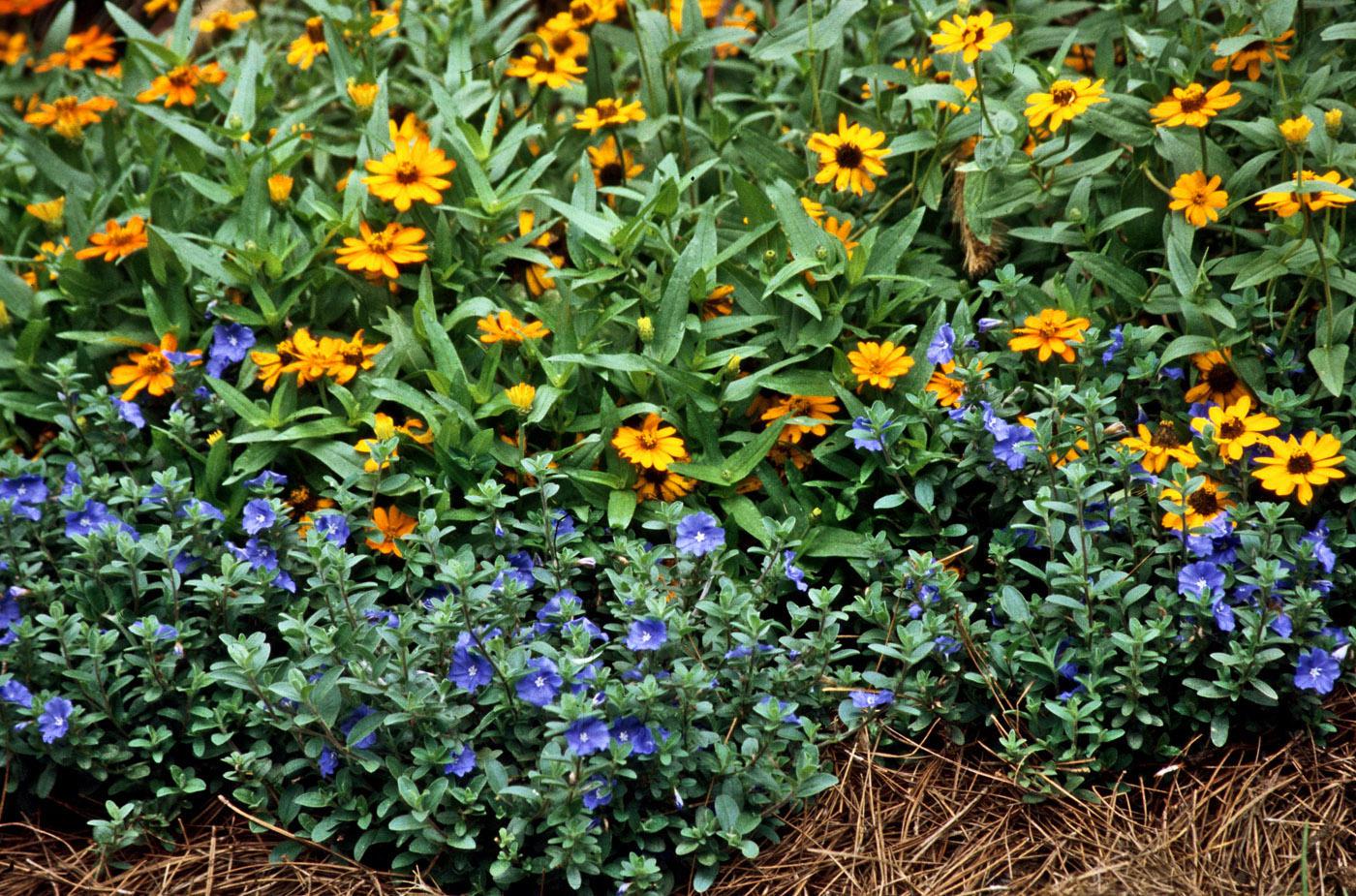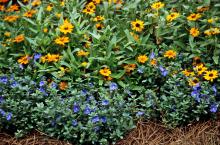Information Possibly Outdated
The information presented on this page was originally released on March 20, 2008. It may not be outdated, but please search our site for more current information. If you plan to quote or reference this information in a publication, please check with the Extension specialist or author before proceeding.
Blue Daze offers rare summerlong color
By Norman Winter
MSU Horticulturist
Central Mississippi Research & Extension Center
At a recent garden and patio show, several gardeners were asking what blue flowers I recommend for the long summer ahead. It seems we just can't get enough blue in the garden.
I always favor the various blue salvias and, of course, the Wave petunias. But one little plant that I still treasure for its rare clear blue is the Blue Daze evolvulus. It's hard to believe it has been a dozen years since it was selected as the first Mississippi Medallion award winner.
Blue Daze is a selection of Evolvulus glomeratus, which is native to Brazil and Paraguay. It is related to our native E. nuttallianus found from Texas and northward to Montana and South Dakota. It thrives in hot summers.
The name “Evolvulus” means to untwist, referring to its nonvining habit. That's pretty special for a plant that is in the morning glory family.
Blue Daze reaches about 12 inches tall, spreading outward to about 24 inches. This low-growing form makes it the perfect plant for the front of the border. Space plants 12 to 24 inches apart.
The icy, light blue flowers are produced from spring until frost, but the flowers aren't its only asset. Blue Daze has olive to gray-green leaves that make it stand out when partnered with typical green-foliaged plants. You also can combine them wonderfully with other gray- or silver-leaved plants.
Blue Daze is perfect for a variety of applications, from hanging baskets to filler plants in mixed containers. Use it to hang over the edge of a window box. I still prefer it planted toward the front of the border and used with other tough-as-nails flowers like the Profusion Fire zinnia or lantana.
Plant yours in a sunny location in early spring after the last frost. Since Blue Daze has the ability to perform for a very long season, it pays to prepare beds properly. Work in 3 to 4 inches of organic matter, along with 2 pounds of a slow-release fertilizer like a 12-6-6 per 100 square feet of bed space. You might wonder if it's really necessary for such a tough plant. But Blue Daze does not like to sit in wet, soggy conditions, so good drainage is an absolute must.
Not too many plants are this maintenance-free. Water during dry periods and make light monthly applications of fertilizer to keep plants blooming until frost. If you prefer water-soluble fertilizers that you mix, that's no problem. The Blue Daze will reward you with even more blooms.
Blue Daze also makes a nice indoor plant in bright areas of the home, so feel free to dig up a plant or two before the first frost.
Blue Daze isn't the only variety on the market. Hawaiian Blue Eyes has reached award status, becoming a Plant of Merit at the Missouri Botanical Garden.
If you have the need for clear blue in flower beds or containers, you can hardly do better than Blue Daze evolvulus.



